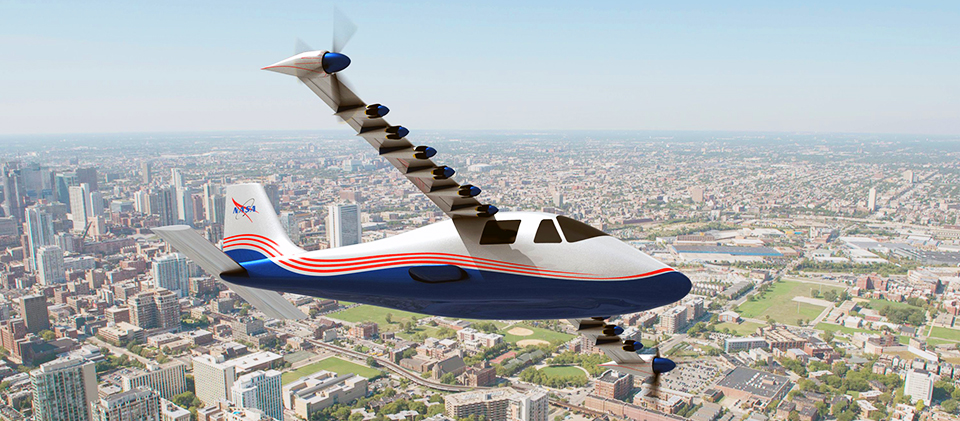NASA’s First Electric X-Plane in Development to Cut Energy Use, Drag
By Matt Kamlet, NASA Armstrong Flight Research Center
July 22, 2018 - While NASA is no stranger to flight research using experimental aircraft or X-planes, the return to crewed experimental flight with the agency’s first all-electric X-plane is at the forefront of innovation.
Featuring 14 all-electric motors and propellers along the leading edge of a high-aspect ratio wing, NASA’s X-57 Maxwell seeks to demonstrate a 500 percent reduction in the energy needed to cruise at high speed. In addition, the test program looks to demonstrate flight that is much quieter and with zero in-flight carbon emissions.
X-57, which is being modified from a gas-powered Tecnam P2006T, is designed to test the operation of multiple electric motors and propellers — a concept known as distributed electric propulsion. To do this, the aircraft will undergo several phases of modifications and flight testing.
The first modification of X-57 into an all-electric X-plane, known as Modification II, will feature replacing the aircraft’s two wing-mounted, gas-powered engines with two electric motors that will turn the propellers. X-57 will undergo its first taxi and flight tests at NASA’s Armstrong Flight Research Center in California once this integration phase is complete.
The following phase, Modification III, will see the aircraft’s original wing replaced with a new longer and skinnier, high-aspect ratio wing. This will help reduce drag for the aircraft. Additionally, the two electric motors from the previous phase will be moved to the tips of the wing. This will counter the drag created by wingtip vortices, commonly seen on conventional aircraft.
Following flight tests in Modification III, the aircraft will be integrated into its final phase, Modification IV. This phase will feature 12 additional small high-lift motors along the leading edge of the wing. These motors and their propellers will be active during takeoff, creating the lift necessary to get X-57 airborne. Then, during the cruise phase of the flight, the propellers will stop turning and the blades will fold in so as not to create drag. They will be activated once again during landing.
X-57 seeks to meet the challenges presented by an ever-increasing number of general aviation aircraft in the airspace each year through innovative research and cutting-edge electric technology.
Representatives of the X-57 project from NASA’s Langley Research Center in Virginia will be on-hand this week during EAA AirVenture 2018 at the NASA tent, located at Aviation Gateway Park, along with a subscale X-57 model for viewing. Jeff Viken, a research scientist in the Aeronautical Systems Analysis Branch at NASA Langley is presenting a forum on Monday at 11:30 a.m. on Forum Pavilion 11 about the X-57.
